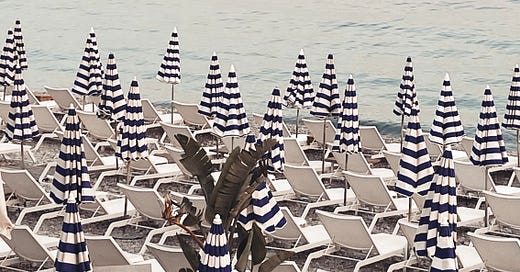A Strange, Precious Moment, and a Letter to Hemingway
Fitzgerald's Tender Is the Night + free pdf version
On the pleasant shore of the French Riviera, about half way between Marseilles and the Italian border, stands a large, proud, rose-colored hotel. Deferential palms cool its flushed façade, and before it stretches a short dazzling beach. Lately it has become a summer resort of notable and fashionable people; a decade ago it was almost deserted after its English clientele went north in April. Now, many bungalows cluster near it, but when this story begins only the cupolas of a dozen old villas rotted like water lilies among the massed pines between Gausse’s Hôtel des Étrangers and Cannes, five miles away.
— F. Scott Fitzgerald: Tender Is the Night
Tender Is the Night
F. Scott Fitzgerald's Tender Is the Night opens with one of the most evocative descriptions in twentieth-century literature: a rose-colored hotel, shaded by palm trees, overlooking a short and dazzling beach. These languid, sensual lines throw us right into Fitzgerald’s signature world of elegance offset by tension, glamour hiding emotional fragility.
To me it matters very much that the novel begins on the Riviera. There are two versions of Tender Is the Night: Fitzgerald’s original 1934 edition, this one, and a posthumous version edited by critic Malcolm Cowley based on Fitzgerald’s notes, which begins at a mental clinic in Switzerland. The latter version reordered the novel chronologically, but I always found that Fitzgerald’s original structure, beginning on the luminous Riviera, is more powerful. The mythology of the place itself seems to draw us into the shimmering disintegration of its characters.
Keep reading with a 7-day free trial
Subscribe to Stories Cafe to keep reading this post and get 7 days of free access to the full post archives.





